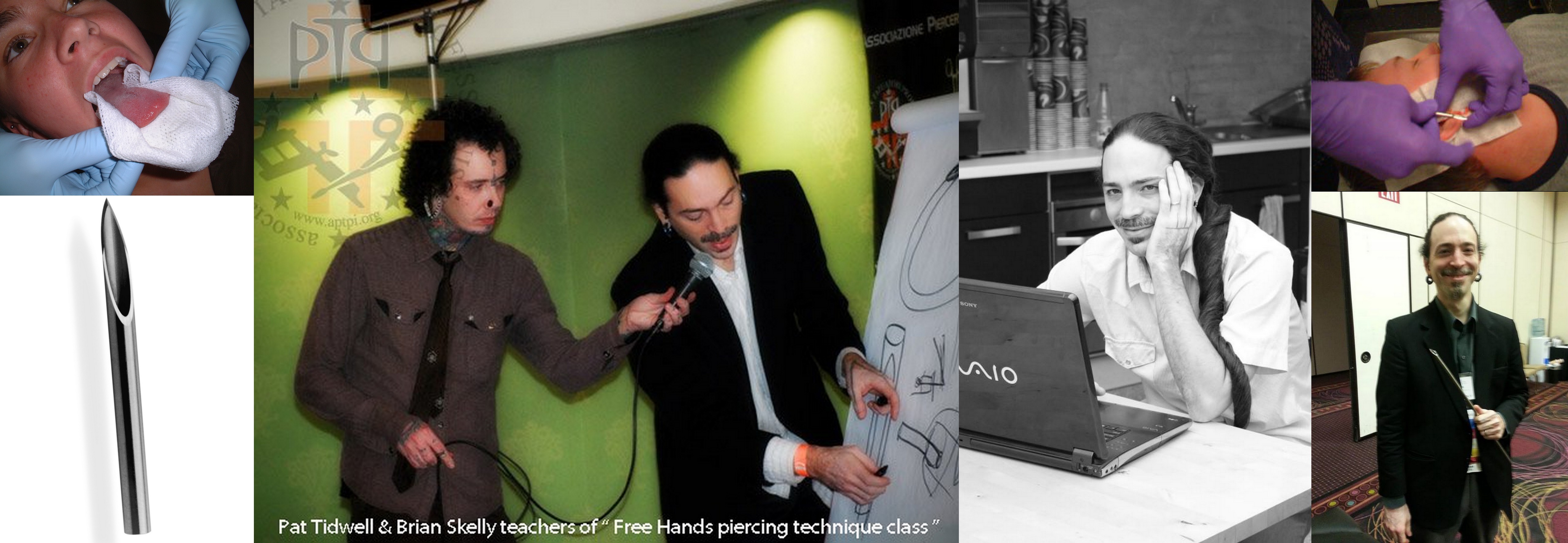We provide advanced education for body artists.
Topics available to discuss
- Infection control
- Sterilization and equipment maintenance
- Jewelry safety standards
- Quality materials and design
- Finishing and customizing jewelry
- Appropriate form, size and placement for new piercings
- Precision modern body piercing techniques
- Safe piercing procedure without clamps [freehand]
- Large gauge initial piercing methods
- Science and experience based aftercare
Attending classes
Online Training
About our founder Brian Skellie
Contact us for more information about advanced training

